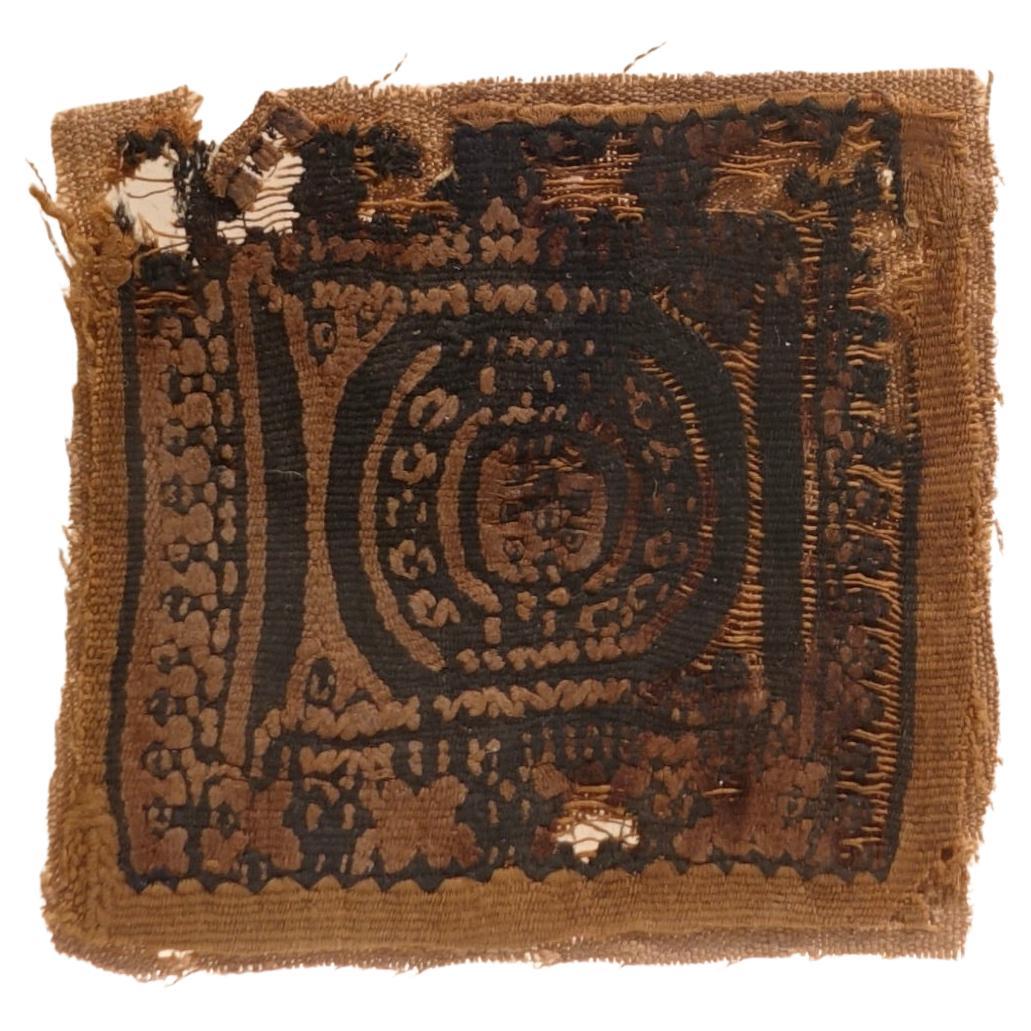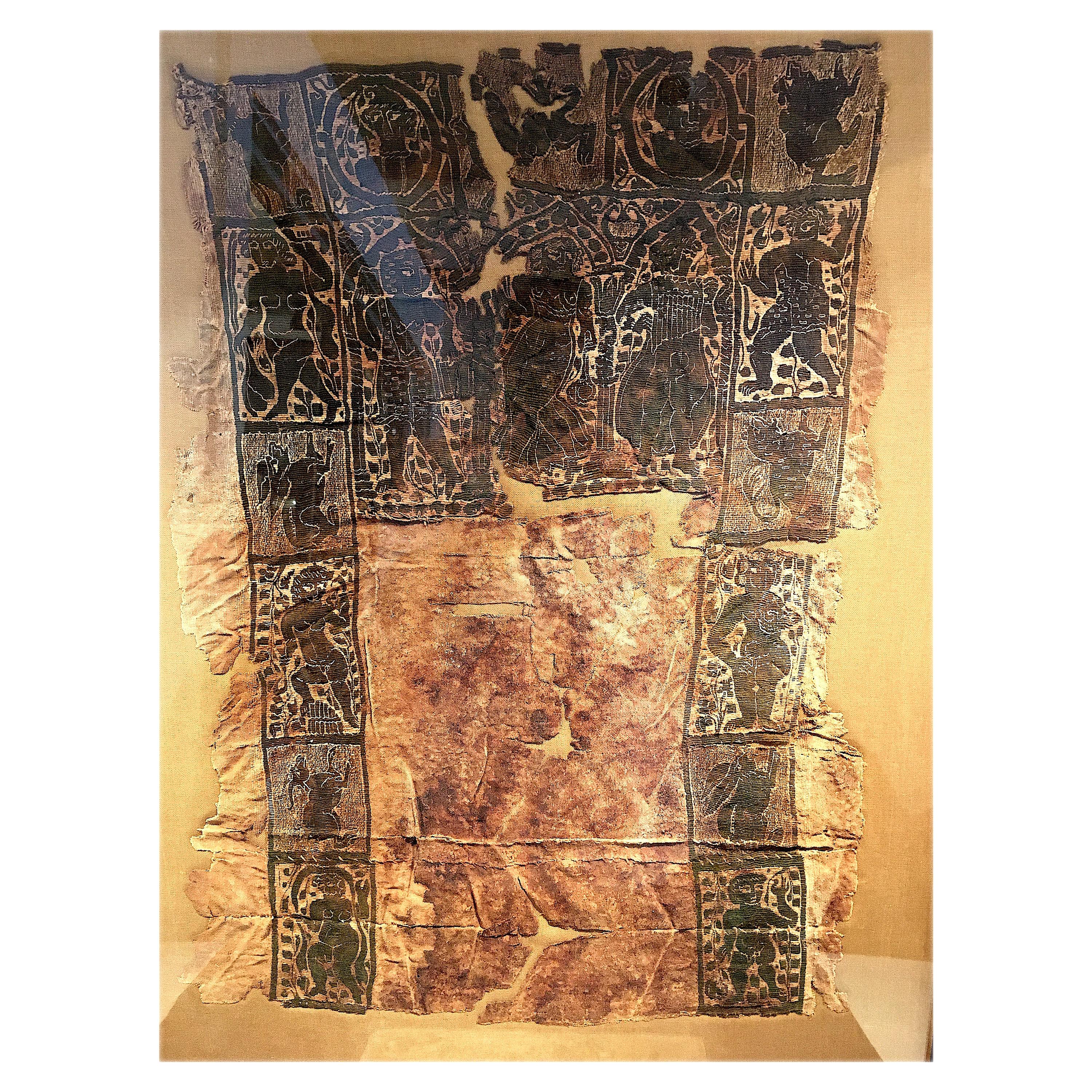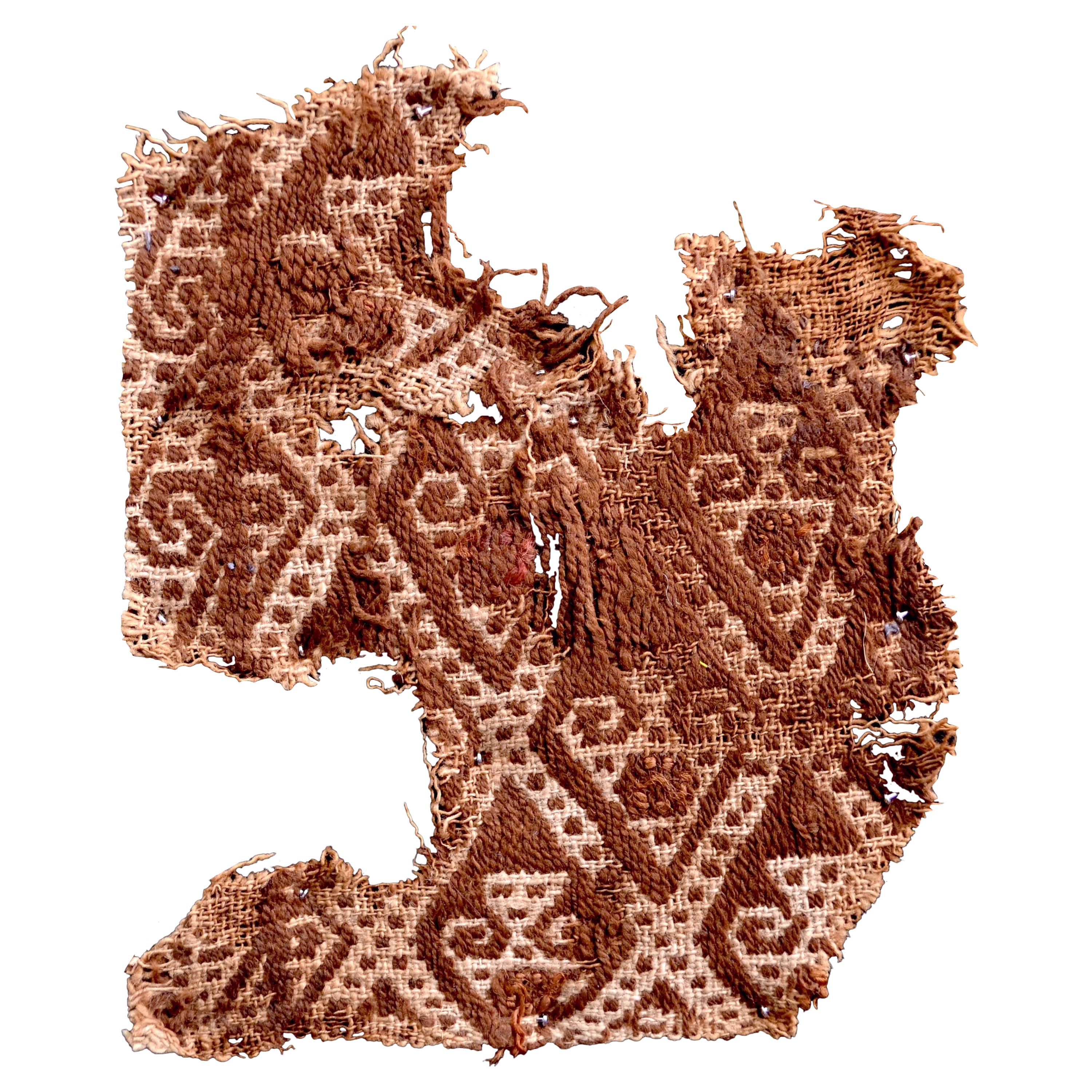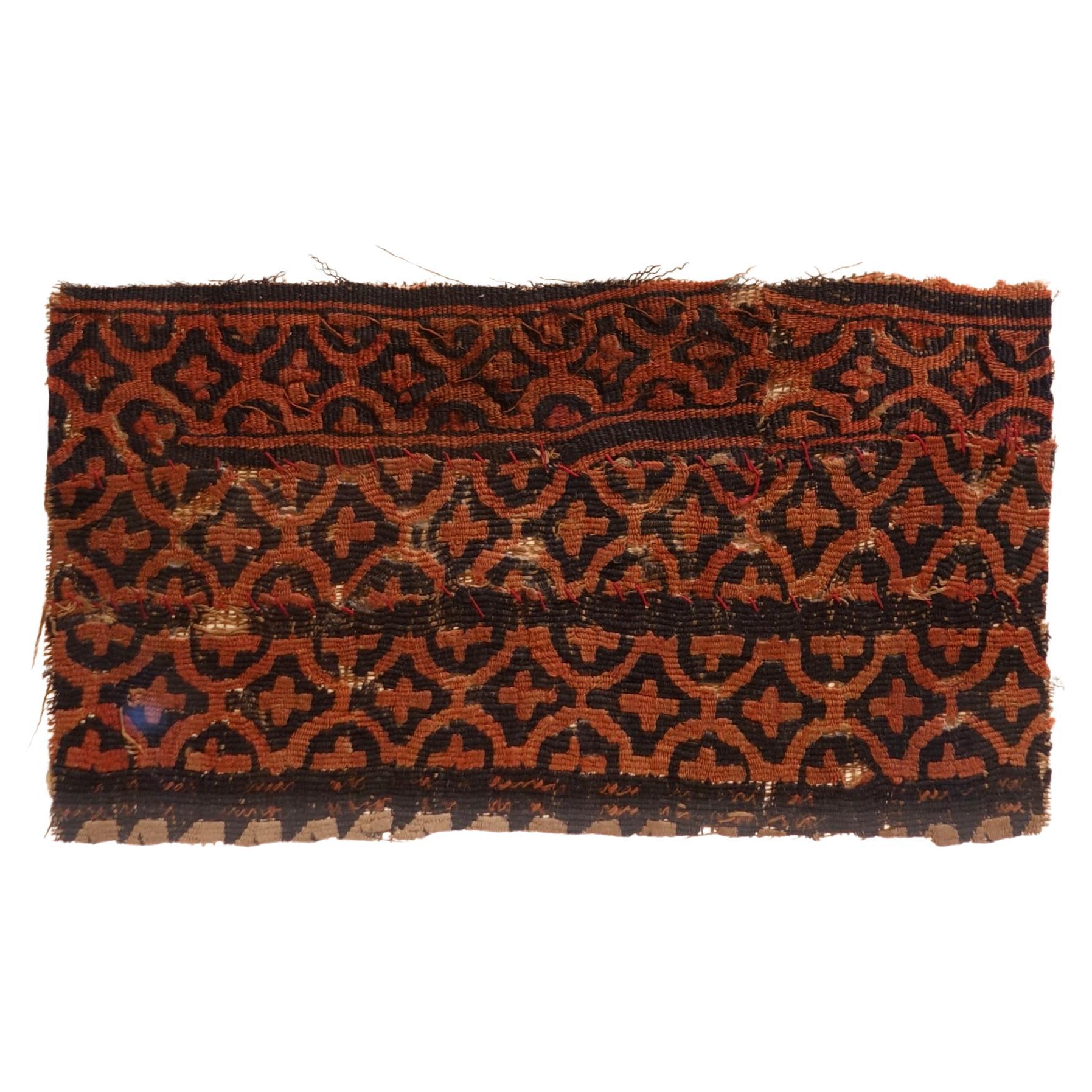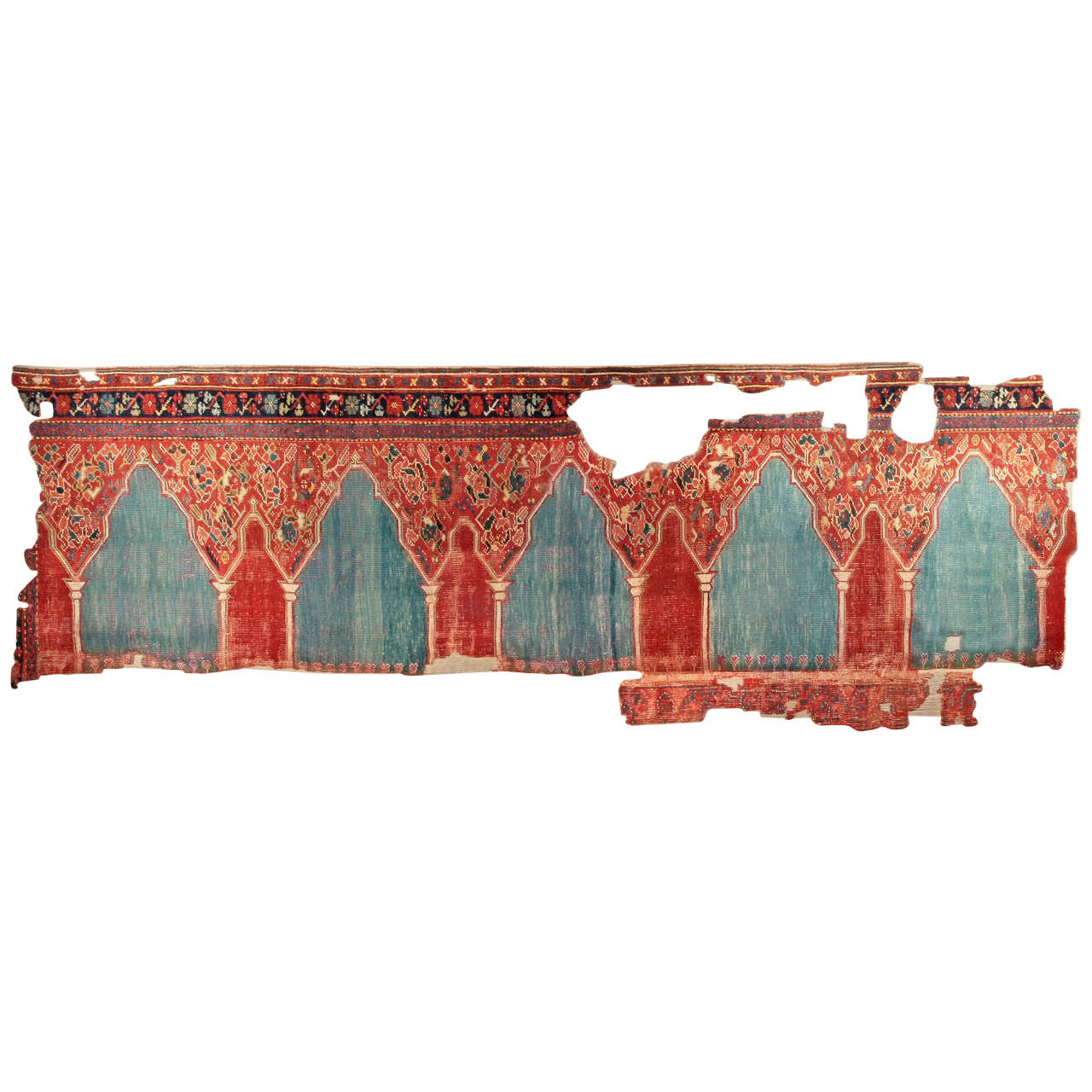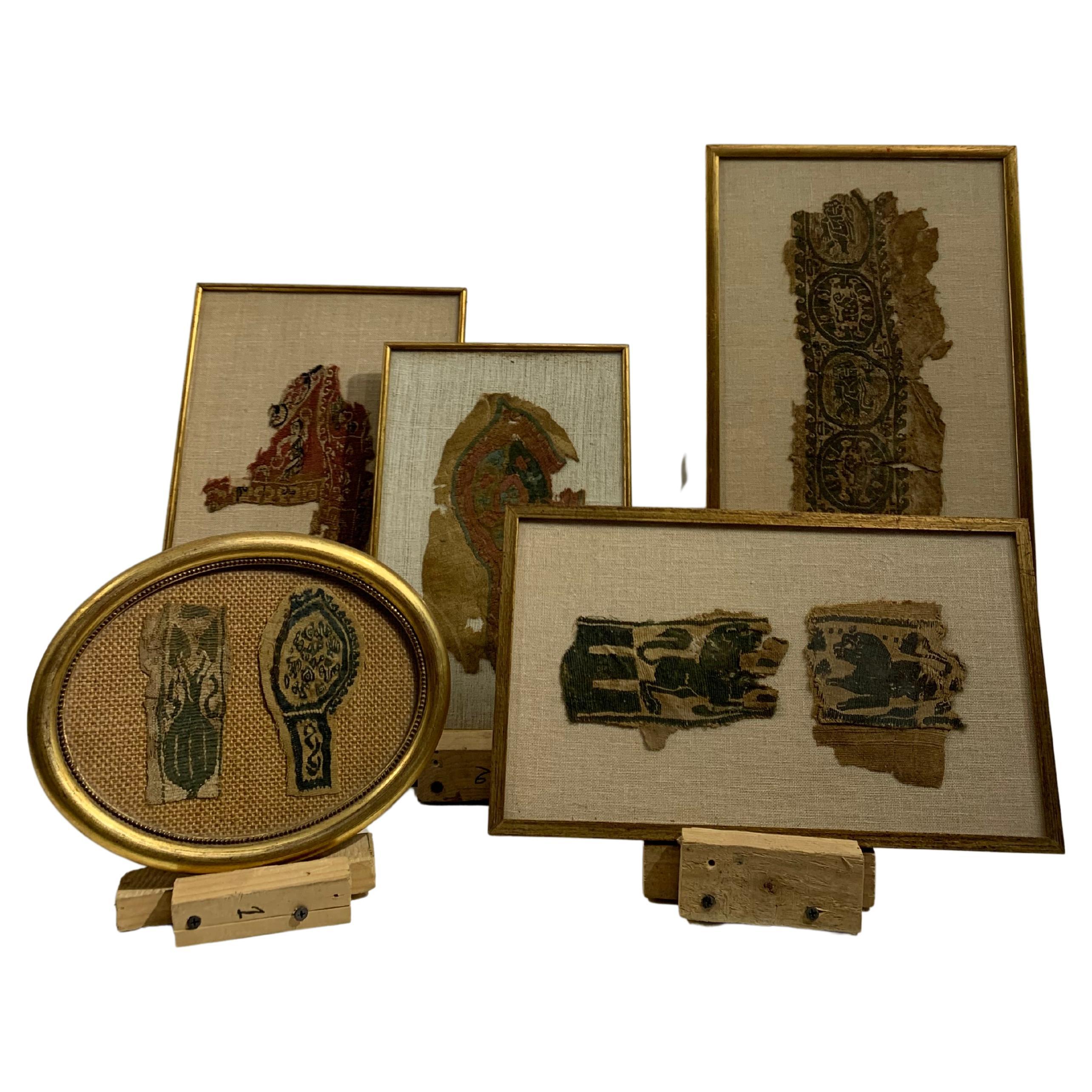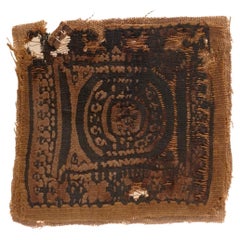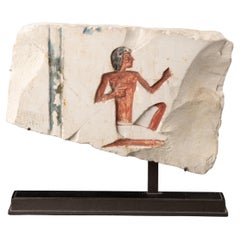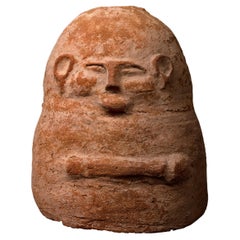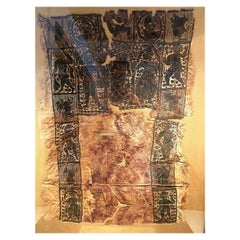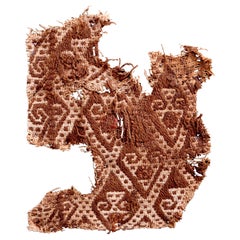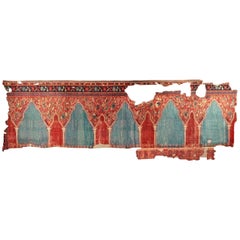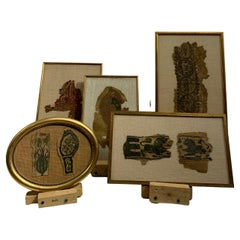Items Similar to Coptic textile Byzantine Period; 4th–5th Century C.E.
Want more images or videos?
Request additional images or videos from the seller
1 of 6
Coptic textile Byzantine Period; 4th–5th Century C.E.
$2,141.26
£1,586.29
€1,800
CA$2,945.17
A$3,275.88
CHF 1,718.52
MX$39,973.13
NOK 21,569.60
SEK 20,326.73
DKK 13,704.96
About the Item
Coptic textile
Byzantine Period; 4th–5th Century C.E.
Materials: linen, Wool
23 x 16 cm
This fragment features black decorations on a beige background, depicting human figures within roundels intertwined with a kneeling angel holding a cornucopia. The border is adorned with curved acanthus leaves that encircle animals.
This woolen fabric is woven in the traditional Coptic Kapati style, characteristic of Egypt during the Christian era. The name "Kapati" refers to the Copts of Egypt and describes a weaving technique that does not use embroidery or printing. It is said that Al-Muqawqis, the governor of Egypt, offered the Prophet garments made from Kapati fabric.
At the 1900 Exposition Universelle in Paris, the French archaeologist Albert Gayet showcased the results of his excavations from the winter of 1898-1899. Around one hundred Coptic textiles and fragments were displayed at the Palais du Costume. Their aesthetic generated considerable enthusiasm, particularly among artists like Auguste Rodin and Henri Matisse. This led to a "Coptomania," which, among other things, influenced fashion designers.
Coptic textiles represent the largest collection of ancient historical textiles found in museums as the Brooklyn museum, the louvre, the Met and palazzo Madama in Turin.
- Dimensions:Height: 6.3 in (16 cm)Width: 9.06 in (23 cm)Depth: 0.04 in (1 mm)
- Style:Egyptian (Of the Period)
- Materials and Techniques:
- Place of Origin:
- Period:
- Date of Manufacture:4th - 5th century C.E.
- Condition:Wear consistent with age and use.
- Seller Location:Bruxelles, BE
- Reference Number:1stDibs: LU6666241776322
About the Seller
5.0
Vetted Professional Seller
Every seller passes strict standards for authenticity and reliability
1stDibs seller since 2022
15 sales on 1stDibs
Typical response time: 1 hour
- ShippingRetrieving quote...Shipping from: Bruxelles, Belgium
- Return Policy
Authenticity Guarantee
In the unlikely event there’s an issue with an item’s authenticity, contact us within 1 year for a full refund. DetailsMoney-Back Guarantee
If your item is not as described, is damaged in transit, or does not arrive, contact us within 7 days for a full refund. Details24-Hour Cancellation
You have a 24-hour grace period in which to reconsider your purchase, with no questions asked.Vetted Professional Sellers
Our world-class sellers must adhere to strict standards for service and quality, maintaining the integrity of our listings.Price-Match Guarantee
If you find that a seller listed the same item for a lower price elsewhere, we’ll match it.Trusted Global Delivery
Our best-in-class carrier network provides specialized shipping options worldwide, including custom delivery.More From This Seller
View AllKapati textile - Epoque Byzantine; 4th–5th Century C.E
Located in Bruxelles, BE
Kapati Textile
Byzantine Period; 4th–5th Century C.E.
Materials: Plant and Animal Fibers, Wool
9,5 x 9,5 cm
This woolen fabric is woven in the traditional Coptic Kapati style, characteristic of Egypt during the Christian era. The name "Kapati" refers to the Copts of Egypt and describes a weaving technique that does not use embroidery or printing. It is said that Al-Muqawqis, the governor of Egypt, offered the Prophet garments made from Kapati fabric.
At the 1900 Exposition Universelle in Paris, the French archaeologist Albert Gayet showcased the results of his excavations from the winter of 1898-1899. Around one hundred Coptic textiles and fragments were displayed at the Palais du Costume. Their aesthetic generated considerable enthusiasm, particularly among artists like Auguste Rodin and Henri Matisse. This led to a "Coptomania," which, among other things, influenced fashion designers.
The square fragment features black decoration on a beige background; the two squares at the center are separated by scalloped edges, from which hang various ornaments or geometric motifs. At the center of the fragment is an image of a dancing figure surrounded by geometric decorations. This piece dates back to a time when ancient...
Category
Antique 15th Century and Earlier Egyptian Egyptian Antiquities
Materials
Wool, Natural Fiber
Wool Tapestry from Egypt
- 5th–7th Century C.E.
Located in Bruxelles, BE
Wool Tapestry from Egypt
Late Antique Period; 5th–7th Century C.E.
This band fragment features geometric decorations in red and black.
Textiles like this are believed to have been...
Category
Antique 15th Century and Earlier Egyptian Egyptian Tapestries
Materials
Wool
Egyptian Fragment of a Seated Man - Ancient Egypt, 26th Dynasty (664-525 BC)
Located in Bruxelles, BE
Egyptian Fragment of a Seated Man
Limestone - polychromy
Ancient Egypt, 26th Dynasty (664-525 BC)
Most likely from the tomb of Montw-m-H3t
Provenanc...
Category
Antique 15th Century and Earlier Egyptian Egyptian Figurative Sculptures
Materials
Limestone
Canaanite Anthropoid Coffin Lid - 12th-10th century BC
Located in Bruxelles, BE
Rare Canaanite Anthropoid Coffin Lid
Terra Cotta
12th – 10th Century BC
Provenance:
Public Auction Paris (2022)
Private Collection F. Antonovich (Paris – 1980s)
Art Loss Register...
Category
Antique 15th Century and Earlier Israeli Archaistic Wall-mounted Sculptures
Materials
Terracotta
Bolognese School of the 16th Century - Mummy of Saint Catherine of Bologna
Located in Bruxelles, BE
Bolognese School of the 16th Century
Mummy of Saint Catherine of Bologna
Oil on Panel
20,5 x 7 x 0,8 cm
This rare painting depicts Saint Catherine of Bologna as a mummy, housed in a ...
Category
Antique 16th Century Italian Renaissance Paintings
Materials
Wood, Giltwood
$3,330 Sale Price
20% Off
Free Shipping
Rare Romanesque Capital Depicting Four Africans, Apulia, 13th Century
Located in Bruxelles, BE
Large stone capital carved on each side in strong relief. The basket is covered with two crowns of vertical acanthus leaves which sprout from the astragal and fill the space between ...
Category
Antique 15th Century and Earlier Italian Medieval Architectural Elements
Materials
Stone
$21,888 Sale Price
20% Off
You May Also Like
Ancient Coptic Textile with Classical Figures
Located in Spring Valley, NY
Finely woven of wool and linen, this large, ancient, museum level Coptic textile depicts figures derived from classical antiquity, some playing musical ...
Category
Antique 15th Century and Earlier Egyptian Classical Roman Antiquities
Materials
Wool, Linen
Abstract Paracas Precolumbian Textile, Peru, 1100-1400 AD, Ex Ferdinand Anton
Located in San Pedro Garza Garcia, Nuevo Leon
Earth tones pre-Columbian textile fragment with abstract embroidered figures. This piece is framed in a black shadowbox.
It is a wonder to behold antiquities such as a pre-Columbian textiles, an authentic piece of art that has been preserved for centuries and that survives generation after generation. Textiles are infinitely more delicate than wood, metal, or rock artifacts -- so the existence of these pieces after hundreds and thousands of years is exceptional. These textiles maintain their vibrant colors, natural threads, and their unique, historical designs.
Provenance: This textile comes from the collection Ulrich Hoffmann, Stuttgart and former collection of the archaeologist Ferdinand Anton...
Category
Antique 15th Century and Earlier Peruvian Pre-Columbian Antiquities
Materials
Textile
Outstanding Antique Ottoman Oushak Multiple Niche Rug Fragment
Located in Milan, IT
A truly majestic Ottoman carpet fragment decorated by a sequence of five niches with capitols leading into an aqua green background. Professionally mounted on a cotton backing, this monumental, architectural weaving is a prime example of antique textile art.
Category
Antique Early 18th Century Turkish Oushak Turkish Rugs
Materials
Wool
8th-9th Century A.D. Coptic Fabrics
Located in Beirut, LB
Set of Coptic fabric remains in Egyptian cotton from the 8th or 9th century A.C. That were found in an excavation work in the 19th century. They are in remarkably good condition. The...
Category
Antique 15th Century and Earlier Egyptian Picture Frames
Materials
Cotton
$8,565 / set
Collection of Three Framed Coptic Textile Fragments
Located in Atlanta, GA
A collection of three antique textile fragments displayed in various frames from an estate collection in US. It consists of a blue on white woven panel presented in a metal frame. Th...
Category
Antique 15th Century and Earlier European Archaistic Tapestries
Materials
Textile, Wood
Framed Antique Coptic Textile Fragment from Byzantine North Africa
Located in Atlanta, GA
A small piece of antique Coptic textile woven as a horizontal band with two linear scallop borders flanking three central medallion design. Each medallion has a concentric pattern wi...
Category
Antique 15th Century and Earlier Egyptian Archaistic Shadow Boxes
Materials
Wood, Wool
More Ways To Browse
Early Byzantine
Folk Costume
Byzantine Furniture
Antique Furniture Brooklyn
Byzantine Antique
Egypt Textile
Angel Kneeling
Coptic Textile
Vintage Blue Bedroom Furniture
Used Rustic Furniture
Off White
Three Hands
Antique Stand
Modern History Furniture
Modern Wall Light
Painted French Furniture
Table Base Mid Century
On Hold
